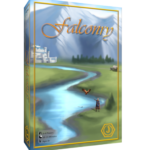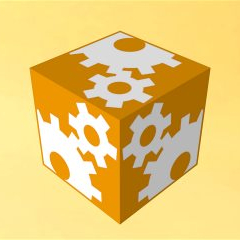
Please Note: This is the first of two articles on auctioning as a tabletop game mechanic. The second article may be accessed here.
Auctions are fun. Have you ever sat in an auction, curious to see what deals you can find, only to realize that you can’t even understand the auctioneer? Worse, you may have innocently reached up to scratch your head in confusion, only to hear as the first legible word, “Sold!” and realize that you had inadvertently bought the old creaky rocker in the corner for a greatly inflated price.
While auctioning in board and card games is usually much less error-prone and much more informal, auctioning can be a great way to provide risk-reward tradeoffs in a more strategic way than dice rolling does.
Take a few minutes to review the article below for an overview of some of the many ways that auctioning can be utilized as an engaging tabletop game mechanism in the games you design and create. Hopefully this sparks some additional ideas, which I would love to hear about in the comments below!

Overview of the Auctioning Mechanic
Auctioning has taken many different forms in a wide variety of games, and can lead to some very fun and sometimes stressful experiences. Usually only the winning bidder receives benefits from bidding, but sometimes the losing bidders are partially compensated with something of lesser value. The Parker Brothers designed several early games with auctioning mechanisms that are still popular today, including Monopoly and Rook.
Monopoly uses one of the more straightforward types of auctioning, where if a player doesn’t want to pay the asking price for a property, he or she must put the property up for auction and place the starting bid. The next player may either pass or place a higher bid, and this continues until one player has placed a bid that no other player is willing to increase, and the player with the winning bid pays the full price. This is often referred to as an English Auction, and is quite common. Many games establish a rule that once players pass once, they are out of the auction and may not bid again, which helps encourage continued participation.
Rook has a similar auction, but with a twist. Players are in teams, but may not communicate with each other. Bids are constrained to increments divisible by five in order to speed up the bidding phase, and players must bid or pass in turn order, though in other games bids may be constrained in other ways. Players’ bids are predictive, and each team guesses at how many points their team will make based on the contents of their hand. In addition, in Rook the players bid on an ambiguous prize, without knowing the cards they will receive for the winning bid. This sometimes leads to interesting situations, such as team members bidding against each other to be able to end up in the best possible position. Skull King employs a similar predictive bidding mechanism, but players are penalized for ending up either over or under their bids, and must hit them exactly.
Auction mechanics can take many other forms, including the following as listed below:
- Dutch Auctions: These reverse the typical flow by gradually decreasing the price until any player is willing to accept the goods at the current asking price. This can add a lot of tension as players hope to get the items at the lowest price possible, but want to bid before the other players for fear of losing the bid.
- Multiple Lots: Sometimes players bid on either multiple items in a lot, or multiple lots at a time in order to auction more items more quickly. Many times this bidding takes place silently, and players privately place bids for all lots at once. Private bids are also used in other contexts, but may sometimes lead to a tie, which must be resolved. Other times, players might be assigned a lot based on their position in a single bid.
- Use of Funds Raised: Usually the funds raised are returned to the bank or common pool, but at times the money paid by the winning bidder is distributed among the losers of the bid, or may even be paid to a single player, such as the one with the lowest bid or the one taking a pre-specified place in the bidding.
- Other Possible Constraints: Often bids are constrained in various ways including those mentioned above, but auctions and bids may also be constrained in the following ways:
- By the bidding going only once around and giving each player one chance only to place a bid.
- By placing an item on a board space representing a fixed bid amount, which fixes both the amounts that may be bid and the number of bids that may be placed.
- By utilizing bidding phases that do not occur at set intervals, but are rather initiated by other events, or even by the players themselves, as is the case in Chicago Express.
- By restricting bidding to only players that perform some kind of task of dexterity or meet some other condition within the game.
- By having bidding tokens represent a fixed amount, and requiring winning players to pay an amount equal to the number of bids placed on the lot.
- By replacing items won in a bid with the items used to bid for them.
- By putting funds paid for a winning bid into use within the game, whether they are distributed to the other players or put somewhere else. For example, Chicago Express invests the funds raised from the winning bid into the train company under consideration, which sometimes leads players to bid more than required to fund their companies.
What are some interesting ways you have seen auctioning be used as a board or card game mechanic? What are some other ideas for how it can be used? Please comment below with your thoughts!
Please Note: This is the first of two articles on auctioning as a tabletop game mechanic. The second article may be accessed here.
While auctioning in board and card games is usually much more informal than traditional auctions, auctioning as a game mechanic can be a great way to provide risk-reward tradeoffs in a more strategic way than dice rolling would.

Examples of Games that use [Mechanic]
Please note: Through the Amazon Associates program, we earn from any qualifying purchases.
Other Tabletop Game Mechanics to Explore
- Action Drafting Mechanic
- Alliances Mechanic
- Auctioning Mechanic (Part 1/2)
- Auctioning Mechanic (Part 2/2)
- Bluffing Mechanic
- Board Game Mechanics: An Overview
- Component Drafting Mechanic
- Cooperation Mechanic
- Dice Rolling Mechanic
- Direct Conflict Mechanic
- Elimination Mechanic
- Engine Building Mechanic
- Finance Mechanic
- Irregular Turn Order Mechanic
- Memory Mechanic
- Negotiation Mechanic
- Random Selection
- Social Deduction Mechanic
- Tile Placement Mechanic
- Unique Abilities Mechanic
- Worker Placement Mechanic
Are there other game mechanics or topics that you would like to see explored further? Please comment below with any requests!





